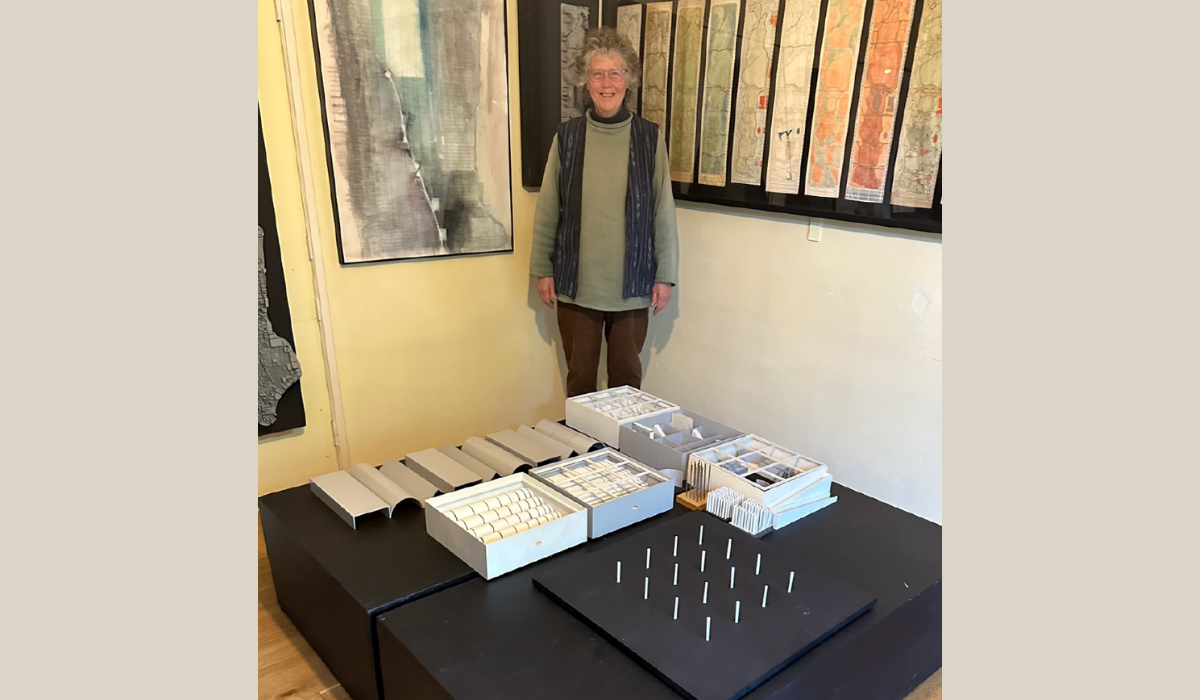A pedagogical project made by Lorna McNeur has been recently acquired by the Museum of Modern Art (MoMA) in New York City for their permanent collection.
The project is a model created by Lorna in 1976, during her first year of architectural study at The Cooper Union in New York City. It is her interpretation of the Nine Square Grid project, a seminal teaching exercise developed by the late, architect philosopher John Hejduk, at The Cooper Union. This project is an architectonic teaching tool for introducing students to the fundamental principles, concepts, philosophy, design, creativity, making, materiality, structures, construction and detailing of architecture.
Lorna McNeur’s model brings a unique and thoughtful interpretation to this foundational exercise. In the words of John Hejduk, ‘Lorna McNeur created the “quintessential nine square grid” solution, after which he no longer needed to teach it. Her work has long been valued within architectural pedagogy, and its inclusion in MoMA’s permanent collection is a testament to its enduring relevance and intellectual rigour.
We are incredibly proud of Lorna and her contribution to the field of architectural education. Her work continues to inspire both students and practitioners alike.
A video describing this pedagogical tool and Lorna’s model interpretation can be viewed below.
Lorna practised architecture intermittently since 1980; in New York at SOM, small NY firms, and independently in Canada and the UK. She taught in Canada at Carleton University for four years, and at The Cooper Union for one year before leaving for the UK. Lorna then took a one year sabbatical and came to Lucy Cavendish College in 1987-88 as an M.Phil student, for the History and Philosophy of Architecture. Towards the end of that year, she was asked to interview for a teaching position, which she achieved, and has been here ever since.
Lorna was the first full time female Lecturer in Architecture at the University of Cambridge, where she taught full time for sixteen years from 1989–2005, teaching design studio and lecturing in the history and theory of urban public space and garden design philosophy. She continued work at the Department as an Affiliated Lecturer until 2009, and consulting with IDBE until 2019; totalling 30 years teaching and research with the University of Cambridge.
She has conducted in-depth studies on the planning principles of New York City and Central Park, as well as Rome and Environs. These have been approached from history, theory, and philosophy perspectives with a view towards informing contemporary design of urban public space. In particular, she studies the interrelationships between the planning of gardens and the planning of cities (eg: NYC and Central Park), and how the two can inform each other about sustainable and contemporary public space issues; including urban theatricality.
Lorna has also completed an advanced training and practiced in Body Psychotherapy. She integrates her architecture and psychotherapy work into Environmental Psychology; working with issues such as environment and emotions, psychology and space. In recent years, she has turned her attentions to ceramic sculpture and videos; regarding psychological perspectives on urban issues and climate change. As an academic and artist, she has been presenting her work at interdisciplinary psychology conferences, that focus on Art Based Research. Lorna was the Chair of the Cambridge Jungian Circle, psychology association, from 2021-2024; and organised all monthly lectures for three years before that, from 2018.
She has lectured, published and exhibited her work internationally, most notably in New York: at the Whitney Museum, The Cooper Union, and Art Forum; in London at the Architectural Association (AA Files); and in Cambridge UK at The Fitzwilliam Museum.
Lorna was a Fellow in Architecture and DoS at Lucy Cavendish College for twenty years from 1989–2009, where she is now an Emeritus Fellow.
View her website below.
Alchemy of Art & Architecture: www.lornamcneur.org




